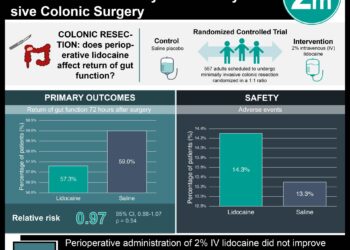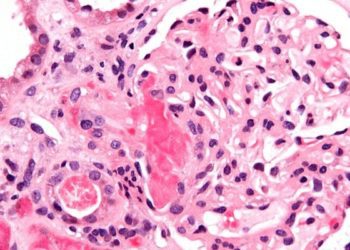2 Minute Medicine Rewind September 16 – September 22, 2013
Image: PD
In this section, we will highlight the key high-impact studies, updates, and analyses published in medicine during the past week.
Chronic Care Management for Dependence on Alcohol and Other Drugs
Patients with alcohol and other substance dependence have poor health outcomes, high health care utilization, and multiple comorbidities, yet often receive fragmented, poor-quality care. In this randomized trial, 563 patients with alcohol and other drug dependence were recruited from detoxification units and teaching hospitals and randomized to chronic care management (CCM) or no CCM to study the effect on self-reported abstinence from substance use over 12 months. CCM included longitudinal care with a primary care physician, motivational enhancement therapy, counseling, addiction and psychiatric treatment, social work assistance, and referrals. Those in the control group received a primary care appointment and list of treatment programs. Investigators found no significant difference in abstinence from drugs or alcohol between the CCM and control group (OR 0.84, 95% CI 0.65-1.10, p=0.21). Investigators did find fewer reported alcohol problems in those with alcohol dependence who received CCM (OR 0.85, p=0.048), however there was no difference between groups with regards to any other outcomes, including addiction severity, acute care utilization, and health-related quality of life.
Effects of Bracing in Adolescents with Idiopathic Scoliosis
Bracing is commonly used to prevent progression of scoliosis, though prior studies were unclear whether bracing reduced the need for surgery in patients with scoliosis. A total of 383 patients participated in this study, with 155 undergoing randomization to bracing or observation, while the remainder (288) declined randomization and chose their treatment method. The primary outcome was curve progression to 50 degrees or more (treatment failure) or skeletal maturity without that degree of progression (treatment success). The trial was stopped early based on effectiveness in favor of bracing (OR for success = 2.03, p=0.0197), and because of a strong positive correlation between time wearing the brace and rate of success in an intention-to-treat analysis. Patients randomized to bracing had a treatment success rate of 75% compared to 42% of those randomized to observation (OR 4.11, 95% CI 1.85-9.16). Among those who wore the brace for an average of >12.9 hours/day (18 hours were recommended), treatment success rate exceeded 90%. The two cohorts (randomized vs preference) were significantly different at baseline on a few levels, including sex distribution and interval between diagnosis and enrollment. However, those who received a brace and those who did not differed significantly only in height – patients in the bracing group were on average 3cm taller.
Effect of Aliskiren on Progression of Coronary Disease in Patients with Prehypertension
The renin-angiotensin-aldosterone system (RAAS) is a common target for blood pressure reduction and may modulate atherosclerosis formation as well. Aliskiren is a renin inhibitor that modulates RAAS activity without the rebound effect of increased renin activity caused by most RAAS modulating agents (ACE inhibitors and angiotensin receptor blockers (ARBs)). In this randomized, double-blinded trial, over 600 patients with 20-50% stenosis on coronary angiography, prehypertension, and 2 cardiovascular risk factors were treated with aliskiren for 1 week, then assigned to either aliskiren or placebo daily for 104 weeks. The primary outcome studied was atherosclerosis progression, as measured by percent atheroma volume (PAV) on intravascular ultrasound (IVUS) performed at baseline and after the treatment period. Median plasma renin activity in the aliskiren group was 0.2ng/mL/h and 1.5ng/ml/hr in the placebo group (p<0.001). PAV decreased by 0.33% (95%CI -0.68% to 0.02%) in the aliskiren group and increased by 0.11% (95%CI -0.24% to 0.45%) in the placebo group (p=0.08). These findings do not support the use of aliskiren in the prevention of progression of coronary atherosclerosis.
Long-Term Colorectal-Cancer Incidence and Mortality after Lower Endoscopy
Colonoscopy is widely endorsed for colon cancer screening and prevention, though there is uncertain data about the effectiveness of colonoscopy for reducing the incidence and mortality associated with proximal colon cancers. The most effective timing and frequency of screening are also not well-established. In this prospective cohort study, investigators analyzed the association of lower endoscopy screening with colorectal cancer (CRC) incidence and mortality among participants in the Nurse’s Health Study and the Health Professionals Follow-up Study over a 22-year period. Reported diagnoses of polyps and colorectal cancer were verified and analyzed. The multivariate hazard ratio (HR) for overall CRC among participants who underwent endoscopy compared to those who did not was 0.57 (95%CI 0.45 to 0.72) after adenomatous polyp removal; 0.60 (95%CI 0.53 to 0.68) after negative sigmoidoscopy; and 0.44 (95%CI after negative colonoscopy. This decreased incidence was most pronounced for distal CRC (HR 0.24, 95% CI 0.18 to 0.32 after negative colonoscopy). However, only negative colonoscopy (and not polypectomy or negative sigmoidoscopy) was associated with a significant but modest reduction in risk of proximal colon cancer (HR 0.73, 95%CI 0.57 to 0.92). Screening colonoscopy was associated with decreased mortality from both distal and proximal colon cancer (HR 0.18, 95% CI 0.10 to 0.31 and HR 0.47, 95%CI 0.29 to 0.76 respectively).
Trends in Physical Activity, Sedentary Behavior, Diet, and BMI Among US Adolescents, 2001-2009
The rising prevalence of overweight and obesity among US adolescents has been a major public health concern, though recent evidence suggests the rates may be leveling off or decreasing. Trends in associated behaviors such as physical activity, sedentary behavior, and diet have not been well-studied. In this series of cross sectional studies, nationally representative samples of US students in grades 6-10 were recruited in 2001-2002, 2005-2006, and 2009-2010 and surveyed regarding socio-demographics, physical activity, sedentary behavior, dietary intake, and height and weight. Investigators found that reported physical activity increased significantly from 4.33 to 4.53 days/week over the study period (p=0.004). Television viewing (both on weekends and weekdays) decreased over the study period (p<0.001) but averaged >2 hours/day overall, and was higher among non-white adolescents. Fruit and vegetable consumption increased (p<0.001) while consumption of sweets and soft drinks decreased (p<0.001) over the study period. Older adolescents had more sweets and soft drinks (p<0.001) than younger ones, and African-American youth consumed the most sweets and soft drinks (p<0.001). Average BMI increased significantly from 2001-2 to 2005-6 (p<0.001), but not from 2005-6 to 2009-10. Overall, the trend in obesogenic behaviors seems to be paralleling the trend in overweight and obesity, though they increased with age and were more prevalent among African-American and Hispanic adolescents compared to white and other counterparts. It is unclear how much of a role public health efforts to improve these behaviors has played into these trends.
By Kathleen Li and David Ouyang
© 2013 2minutemedicine.com. All rights reserved. No works may be reproduced without written consent from 2minutemedicine.com. Disclaimer: We present factual information directly from peer reviewed medical journals. No post should be construed as medical advice and is not intended as such by the authors or by 2minutemedicine.com. PLEASE SEE A HEALTHCARE PROVIDER IN YOUR AREA IF YOU SEEK MEDICAL ADVICE OF ANY SORT. Content is produced in accordance with fair use copyrights solely and strictly for the purpose of teaching, news and criticism. No benefit, monetary or otherwise, is realized by any participants or the owner of this domain.







